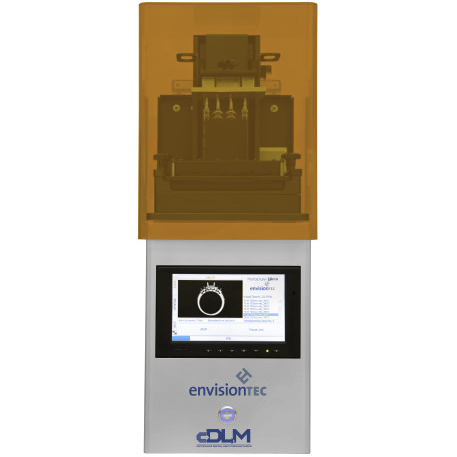
Once Carbon broke the Internet with its ultra-fast continuous liquid interface production (CLIP) technology in 2015, the race was on for other manufacturers of vat polymerization 3D printers to demonstrate their own rapid 3D printing processes.
Despite Carbon’s existing patents on aspects of continuous digital light processing (DLP), Carima in Korea, 3D Systems in the United States and Prodways in France have all shown off variations of the technology, with Carima planning on a commercial release. Now, DLP pioneer EnvisionTEC has unveiled its own continuous 3D printing process.
At the JCK Las Vegas trade show, EnvisionTEC showcased their new Micro Plus cDLM 3D printer, which features a UV LED light engine capable of 3D printing objects at speeds of 10 to 20 minutes per inch on the Z-axis, depending on the material. The system has a petite build size of 45 mm x 28 mm x 75 mm (1.8 in x 1.1 in x 3.0 in), an integrated PC with Wi-Fi and a built-in touchscreen. The system is currently being targeted at the jewelry market for its ability to 3D print directly castable objects.
As EnvisionTEC CEO Al Siblani said of the new product, “The addition of cDLM technology to EnvisionTEC’s Micro Plus 3D printer is a game changer for the jewelry industry. Traditionally, 3D printing castable materials such as our PIC 100 would take hours. With cDLM, bridal and fashion rings can be designed, grown and ready for investment casting the same day, which is a huge advantage for the jewelry market.”
Other than the above specifications, not much information was revealed about the machine. It is possible that it employs a similar oxygen-permeable window employed by the Carbon and 3D Systems machines, which would allow for minimal friction and maximum photo curing as the print bed is raised from the photopolymer vat. We will have to wait until the machine is made available in August to know more.
Read more at ENGINEERING.com

